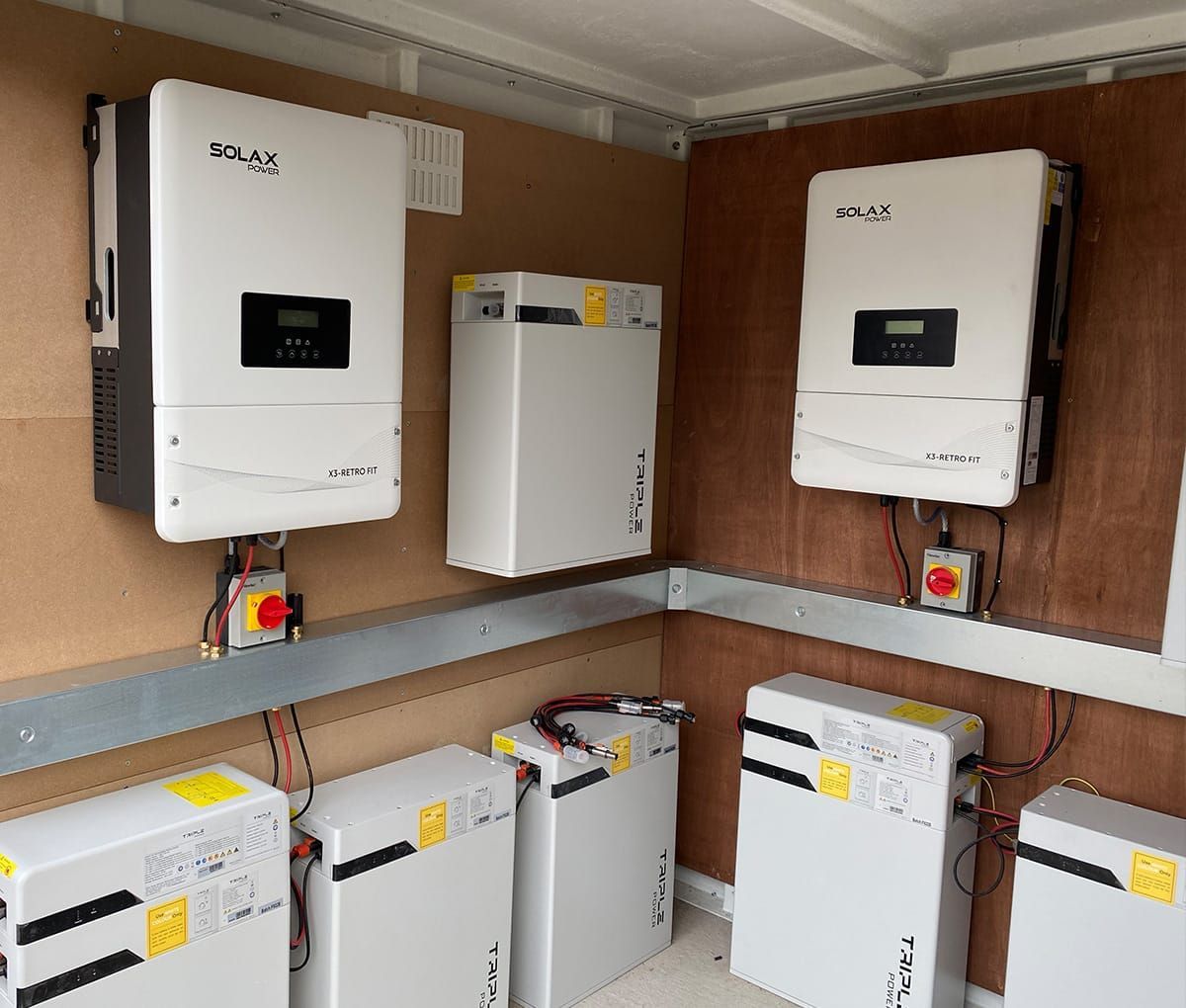Renewable Energy Solutions for Commercial Property 2023
Understanding the Need for Commercial Enterprise to Transition to a More Sustainable Future
The Impact of Fossil Fuels on Climate Change
The burning of fossil fuels, such as coal, oil, and natural gas, releases greenhouse gases into the atmosphere, contributing to the phenomenon known as climate change. These gases, primarily carbon dioxide (CO2), trap heat within the Earth's atmosphere, leading to rising global temperatures and disrupting weather patterns. The consequences of climate change are far-reaching, including increased frequency and severity of natural disasters, sea-level rise, and ecosystem disruptions.
Renewable Energy as a Solution
Renewable energy sources, on the other hand, offer a sustainable and environmentally friendly alternative to fossil fuels. By harnessing the power of naturally replenishing resources such as sunlight, wind, and water, we can generate electricity without depleting finite resources or emitting harmful greenhouse gases. Transitioning towards renewable energy is crucial to mitigating climate change and ensuring a sustainable future for generations to come.
Benefits of Renewable Energy

Reduced Carbon Emissions
One of the key benefits of transitioning to renewable energy is the significant reduction in carbon emissions. Unlike fossil fuels, which release carbon dioxide and other greenhouse gases when burned, renewable energy sources produce little to no emissions during operation. For example, solar panels generate electricity by converting sunlight into energy without emitting any greenhouse gases. By switching to renewable energy, we can actively combat climate change by reducing our carbon footprint and minimizing our contribution to global warming.
Cost Savings in Electricity Bills
Another compelling advantage of sustainable renewable energy products and solutions is the potential for substantial cost savings in electricity bills over an extended period. While the initial investment in renewable energy systems may require some upfront expenses, the long-term benefits outweigh the initial costs. Solar panels, for instance, generate electricity from sunlight, which is an abundant and free resource. By harnessing solar power, homeowners and businesses can significantly reduce their reliance on the traditional energy grid, resulting in lower electricity bills and long-term savings.
Unlimited Power Source
Renewable energy technologies, and renewables such as solar panels and wind turbines, offer a clean and virtually unlimited power source. Unlike fossil fuels, which are finite and depletable, renewable energy sources rely on natural resources that replenish themselves. The sun will continue to shine, and the wind will keep blowing, making these energy sources sustainable in the long run. This unlimited availability of renewable energy ensures a stable and consistent power supply, reducing the need for expensive and unpredictable energy markets.
Transitioning to Solar Energy

How Solar Panels Work
Solar panels, also known as photovoltaic (PV) panels, convert sunlight into electricity through a process called the photovoltaic effect. The panels consist of multiple solar cells made of semiconductor materials, typically silicon. When sunlight hits the solar cells, it excites the electrons within the material, creating a flow of direct current (DC) electricity. This DC electricity is then converted into alternating current (AC) through an inverter, making it suitable for use in homes and businesses.
Installation and Maintenance Considerations
Installing solar panels requires careful planning and consideration. The panels are typically mounted on rooftops or in open areas where they can receive maximum sunlight exposure. The installation process involves securing the panels to a stable structure and connecting them to an inverter and the electrical system of the building. It is advisable to consult with professionals or solar installation companies to ensure a safe and efficient installation.
Regular maintenance is essential to ensure optimal performance and longevity of solar panels. This includes keeping the panels clean from dirt and debris, checking for any damage or shading that may affect their efficiency, and monitoring the system's overall performance. Many solar companies offer maintenance services to help homeowners and businesses maximize the benefits of their solar energy systems.
Government Incentives and Rebates
To encourage the adoption of solar energy, many governments and local authorities offer incentives and rebates to offset the costs of installation. These incentives may include tax credits, grants, or feed-in tariffs, where excess electricity generated by the solar panels can be fed back into the grid for financial compensation. It is worthwhile to research the available incentives and consult with local authorities or solar installers to take full advantage of these financial benefits.
Harnessing the Power of Wind

The Advantages of Wind Energy
Wind energy is another renewable resource that offers numerous advantages. Wind turbines convert the kinetic energy of the various onshore wind, into mechanical power, which is then converted into electricity through a generator. Here are some key advantages of harnessing wind energy:
- Clean and Renewable: Wind energy does not produce any emissions or pollution during operation, making it an environmentally friendly alternative to fossil fuels.
- Abundant Resource: Wind is a naturally occurring resource available in many regions globally, making wind energy a viable option for sustainable electricity generation.
Considerations for Wind Turbine Installation
Harnessing wind energy through the installation of offshore wind turbines requires careful consideration of various factors. Here are some key considerations:
- Wind Resource: Before installing wind turbines, it is essential to assess the wind resource in the specific location. Wind speed, consistency, and direction are crucial factors that determine the feasibility and efficiency of wind energy generation.
- Site Selection: Choosing the right location for wind turbine installation is critical. Factors such as open and unobstructed terrain, away from tall structures and trees that may cause turbulence, are important for optimal performance.
- Permits and Regulations: Wind turbine installations often require permits and compliance with local regulations. It is necessary to obtain the necessary approvals and ensure compliance with noise, safety, and environmental regulations.
- Maintenance and Monitoring: Regular maintenance and monitoring are crucial to ensure the efficient and safe operation of wind turbines. Monitoring systems can detect any issues or deviations in performance, allowing for timely maintenance and repairs.
- Community Engagement: In some cases, wind energy projects may face opposition from local communities. Engaging with the community, addressing concerns, and providing transparent information about the benefits of wind energy can help build support and acceptance.
Community Wind Projects
Community wind projects involve the participation of local communities in the development and ownership of wind farms and energy installations. These projects offer several advantages, including:
- Local Economic Development: Community wind projects can stimulate local economies by creating job opportunities, supporting local businesses, and generating income for the community.
- Shared Ownership: By involving community members in the ownership and operation of wind turbines, community wind projects empower individuals and ensure that the benefits of renewable energy are distributed among the local population.
- Community Engagement: Community wind projects foster community engagement and collaboration, allowing residents to actively participate in the transition towards renewable energy and take pride in their sustainable initiatives.
Exploring Battery Storage Systems

The Role of Energy Storage
Battery storage systems play a crucial role in maximizing the benefits of renewable energy sources. These systems store excess electricity generated by solar panels or wind turbines and make it available for use when the demand is high or when renewable energy generation is low. Energy storage helps address the intermittent nature of renewable energy sources, ensuring a reliable and stable power supply.
Types of Battery Technologies
There are different types of battery technologies used in energy storage systems. Some common ones include:
- Lithium-Ion Batteries: Lithium-ion batteries are widely used in energy storage systems due to their high energy density, efficiency, and long cycle life. They are commonly used in residential, commercial, and utility-scale applications.
- Lead-Acid Batteries: Lead-acid batteries are a well-established technology and have been used in energy storage for many years. They are cost-effective and suitable for smaller-scale applications.
- Flow Batteries: Flow batteries use two electrolytes that flow through a membrane to store and release energy. They offer scalability and longer-duration storage capabilities, making them suitable for grid-scale applications.
- Other Technologies: Other battery technologies, such as sodium-ion batteries and solid-state batteries, are also being researched and developed for energy storage applications.
Integrating Storage with Renewable Energy Systems
Integrating battery storage systems with renewable energy installations offers energy company several benefits:
- Energy Shifting: By storing excess electricity during periods of low demand and discharging it during high-demand periods, battery storage helps balance supply and demand, reducing strain on the grid.
- Enhanced Reliability: Energy storage systems provide backup power in case of grid outages or fluctuations, ensuring a reliable and uninterrupted power supply.
- Optimised Renewable Energy Use: Battery storage allows for better utilization of renewable energy resources by storing excess energy for later use when the sun is not shining or the wind is not blowing. This maximizes the use of renewable energy and reduces the need for backup power from fossil fuel-based sources.
- Grid Support: Battery storage systems can provide ancillary services to the grid, such as frequency regulation and voltage support. This helps maintain grid stability and reliability, especially as the share of renewable energy increases.
- Cost Savings: By storing excess energy and using it during peak demand periods, battery storage systems can reduce the need to purchase electricity from the grid at higher rates. This leads to cost savings and potentially lower electricity bills for consumers.
Energy Efficiency in Commercial Buildings
Commercial buildings consume a significant amount of energy for heating, cooling, lighting, and operating various equipment. Implementing energy-efficient systems and practices in these buildings can result in substantial reductions in operational costs and contribute to overall company sustainability goals.
Lighting Efficiency
One of the key areas where energy efficiency can be improved in commercial buildings is lighting. By transitioning to energy-efficient lighting systems, such as LED (Light-Emitting Diode) technology, businesses can significantly reduce their energy consumption. LED lights consume less energy, have a longer lifespan, and provide better lighting quality compared to traditional incandescent or fluorescent lights.
Heating, Ventilation, and Air Conditioning (HVAC) Systems
HVAC systems are responsible for a significant portion of energy consumption in commercial buildings. Upgrading to energy-efficient HVAC systems can lead to substantial energy savings. Technologies such as variable speed drives, smart thermostats, and improved insulation can optimize heating and cooling operations, reducing energy waste and improving overall comfort for building occupants.
Energy Management Systems
Implementing energy management systems (EMS) in commercial buildings allows for comprehensive monitoring, control, and optimization of energy usage. EMS can analyse energy data, identify inefficiencies, and provide actionable insights to improve energy performance. By fine-tuning operations and automating energy-saving measures, businesses can achieve significant cost savings and reduce their environmental impact.
Building Envelope and Insulation
The building envelope, including walls, roofs, windows, and insulation, plays a vital role in maintaining thermal comfort and energy efficiency. Investing in insulation upgrades and ensuring proper sealing of air leaks can reduce heat transfer and minimize energy losses. Additionally, choosing energy-efficient windows and shading devices can help regulate internal temperatures and reduce the need for excessive heating or cooling.
Employee Engagement and Behavioural Changes
Promoting energy-efficient practices among employees is an essential aspect of reducing energy consumption in commercial buildings. Educating employees about energy-saving measures, encouraging the responsible use of resources, and incentivizing energy-conscious behaviour can create a culture of sustainability within the workplace. Simple actions such as turning off lights when not in use, powering down electronic devices, and using natural light can collectively make a significant impact on energy conservation.
Conclusion
Reducing our dependence on fossil fuels, transitioning towards renewable energy, and implementing energy-efficient practices are crucial steps in combating climate change and building a sustainable future. By embracing renewable energy technologies such as solar panels and wind turbines, we can reduce our carbon footprint, develop and promote clean energy generation, and contribute to a greener planet.
Moreover, the implementation of a range of energy-efficient systems and practices in commercial buildings can optimize energy usage, resulting in significant cost savings and reduced environmental impact. Energy-efficient lighting, HVAC systems, insulation, and employee engagement can all play a vital role in achieving energy efficiency goals.
The time to act is now. By reducing our dependence on fossil fuels and embracing renewable energy and energy efficiency, we can pave the way for a more sustainable and resilient future.






